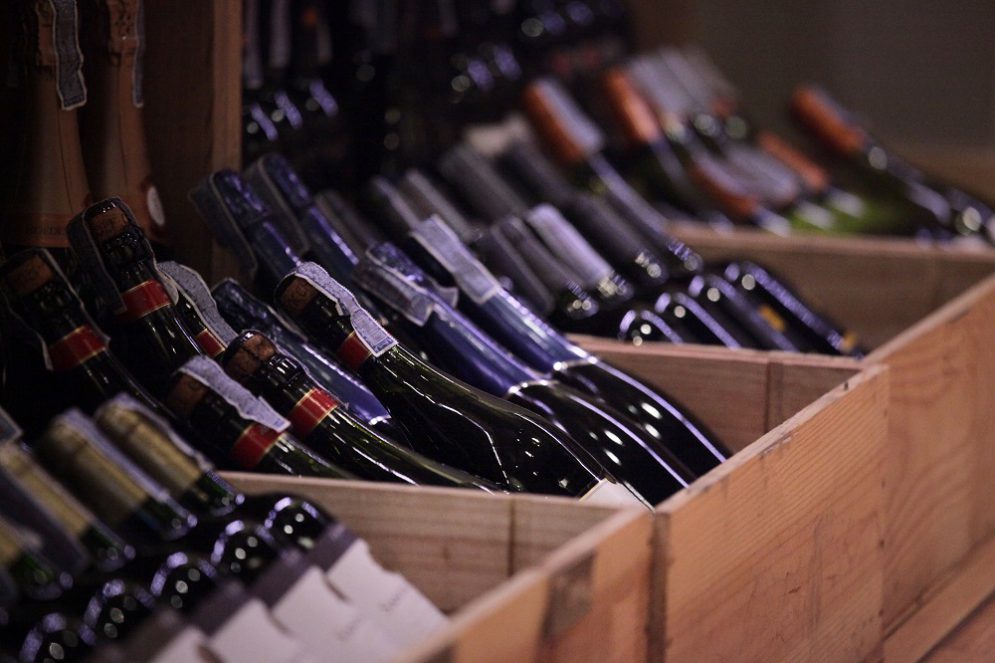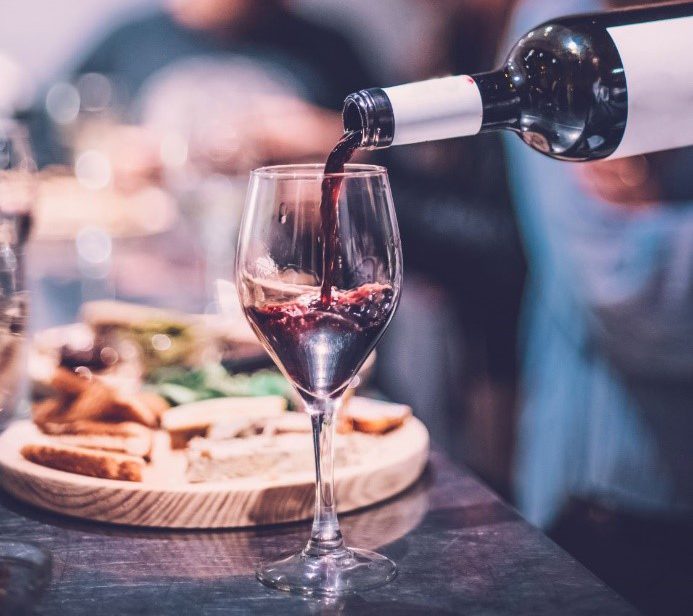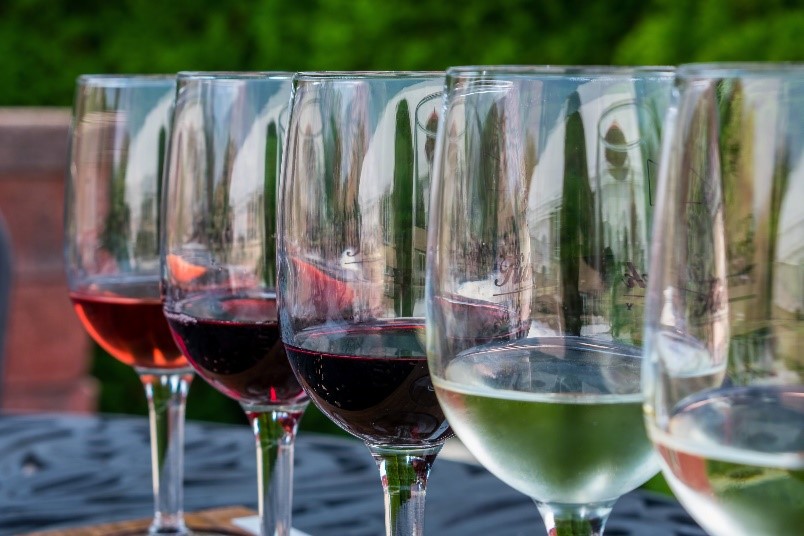Have you ever tried to buy wine only to find yourself inundated with all of the descriptions, leading to decision paralysis? Learning how to taste wine can be an intimidating goal, but you don’t need to have perfect knowledge of grapes and regions to start deepening your understanding of wine and what you like.
We use our senses every day when we eat a meal at home or in our favorite restaurant, and we judge the meal by how the food looks, smells and tastes. These simple principles can also be applied to wine tasting, allowing you to identify characteristics that you enjoy.
Drinking wine should be a pleasant experience, so don’t be overwhelmed by the idea that you “aren’t doing it right.” We’re breaking down the basics of at-home wine tasting to help you get started. We’ve also incorporated some pro tips from Nick Hetzel, Master Sommelier and National Director of Education for Jackson Family Wines. As one of only 269 Master Sommeliers in the world, Nick is one of the leading experts in wine, so we know we’ll be following his advice!

Choosing the right glassware
Before you uncork, make sure you have the right vessel. A Solo cup might be fine for wine on the porch during a barbecue, but for a proper tasting you will want to choose a glass that allows you to get the most out of the wine.
Red Wine
Glasses for red wine typically have a rounder, wider bowl. This allows for more exposure to oxygen, increasing the rate of oxidation, which will “open up” bolder wines like a Cabernet Sauvignon or Syrah.
White Wine
If you are drinking white wine, choose a glass with a narrower bowl and a smaller mouth, especially if the wine is lighter and crisp like a Sauvignon Blanc or Pinot Grigio.
Sommelier tip:
Nick says “There are general rules of thumb that apply, such as a big bowl and narrow opening (Burgundy Glass) for aromatic red varieties such as Pinot Noir. However, these rules can and should be broken. I would have a set of three different types of glasses: white wine/all-purpose, Burgundy and Bordeaux.” Although you may think that sparkling wine needs a special glass, Nick dispels that notion, stating “sparkling wines will benefit from a larger bowl such as a white wine or Burgundy glass.”
Serving temperature
The temperature of wine can greatly impact the aroma and flavor profile of the wine. Generally, red wines are meant to be enjoyed warmer than white varieties. This applies more to higher tannin wines, which start to smooth out at warmer temperatures. White wines are typically served more chilled to enhance their aromas and make them more refreshing.
Sommelier tip:
We asked Nick to weigh in on the perfect temperatures for different wine varieties to ensure optimal taste. He says “In general, we drink red wines too warm and white wines too cold. What happens when we do this is that we dumb-down the wine’s flavors and aromas. Ideally one would drink red wine around 60 degrees and white, rosé and sparkling around 55 degrees.”
How to taste wine – The five “S” steps
See
It’s important to notice the shade and intensity of the wine, and if it aligns with the type and age of wine you are tasting. Colors change as wine ages. For example, red wine that had less time to develop may have purplish hues. This purplish tint will diminish as the wine ages and will appear more red. Examining the color can give you clues as to how long a wine was aged. Also look for how clear the wine appears, or conversely if it is cloudy or has other impurities. The best way to evaluate for color is to tilt the wine glass at a 45-degree angle and examine the color in a well-lit room against a white napkin.
Swirl and Smell
“The human nose can identify thousands of different types of aromas, some at levels as low as several parts per trillion,” according to About Wine. This allows for a much wider range of descriptions compared to our relatively small palate of descriptors for taste: bitter, salty, sweet and sour. Don’t be overwhelmed by the descriptions that you see at your local wine merchant. If a wine is described as fruity with notes of black pepper, this doesn’t mean those ingredients were used to make the wine. It is just a descriptor to help guide you as you make your selections.
Once you have the wine glass in your hand, gently swirl the wine and then put your nose inside the glass and inhale. Take note of smells you identify and if they are pleasing or not. Also note their intensity as there will be some that are very mild and others that will command more attention. After 30 seconds repeat the process and note any changes in your first impression.
Sip and Savor

Swirl the glass again and inhale with your nose while you take your first sip. You don’t want to swallow immediately. Let the wine remain in your mouth for a few seconds as you pay attention to flavors that you notice. Repeat the process once again and write down any changes from your initial reaction.
Sommelier tip:
Whether you are identifying floral, fruity or spice notes, it can be difficult initially to place what you smell or taste. We asked Nick to suggest the easiest element for a wine novice to begin identifying and he suggests starting with fruit- “The key takeaway when sensing and describing wine is that we all have different visceral experiences and thus will describe them differently. With that said, I think the easiest component in wine for people to identify and relate to is fruit. We’ve all had various types of fruits in our lives and generally these elements can be easily identified. While wines don’t actually contain fruits such as red cherries, many red wines will smell and taste of them,” says Nick.
Setting up your wine tasting
Wine judges have a long list of procedures to allow for a fair and balanced review, especially at competitions. Many of these rules are overkill for a simple tasting party at your home. But here are a few tips that can help you throw a great tasting party or for your stay-at-home date night.
Try a blind tasting. Nominate someone (as the party host it is good to volunteer) to present the wines to each guest in the same order with a numbered scorecard. Guests can use the scorecard to make tasting notes and score the wines in predetermined categories.
Talking about the wines during the tasting can influence other people’s opinions, so discuss anything you want but save your opinions for after the tasting is over.
There are a few basic rules for ordering the wines if you have a wide variety.
- White wines should be tasted before red.
- Dry wines should be tasted before sweet.
- Lighter wines should be tasted before full-bodied or bolder wines.
- Young wines should be tasted before older.
- Table wines should be tasted before dessert wines.
Tasting wine is a great solo or social activity that can expand your palate and knowledge of various types so you can pick the right wine for you, no matter the occasion. Most importantly it should be fun, not stressful. The last piece of advice we received from Nick regarding the “rules” of wine tasting is, “Simply put, there are no rules. Unfortunately, wine can carry a stigma of pomp and circumstance. In my opinion, the more rules that are placed on the tasting of wine leads to a lack of enjoyment of wine. My lone piece of advice… hold the wine glass by the stem!”
If you want to know more, then let curiosity be your guide. Explore the vast collection of books, online forums and magazines all dedicated to covering every aspect of wine from the vineyards to your dinner table.


